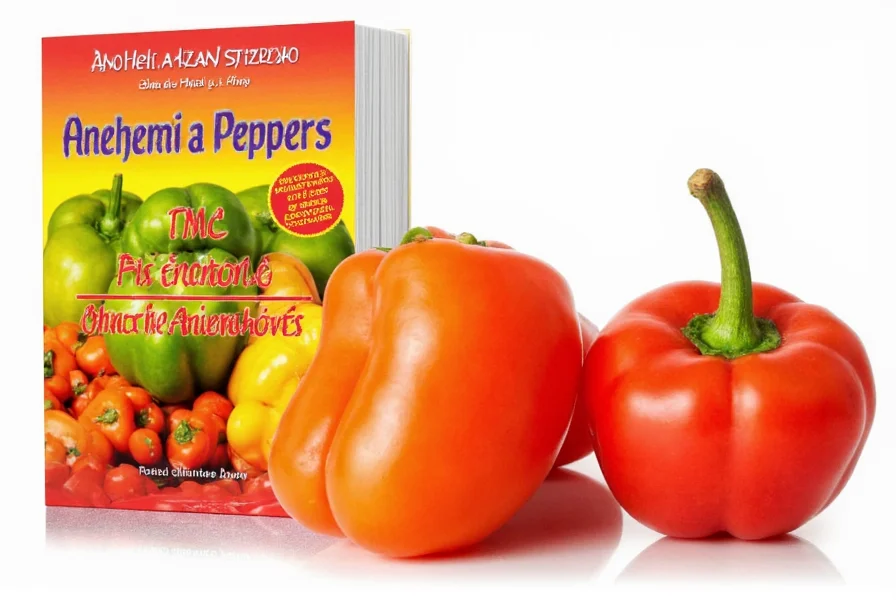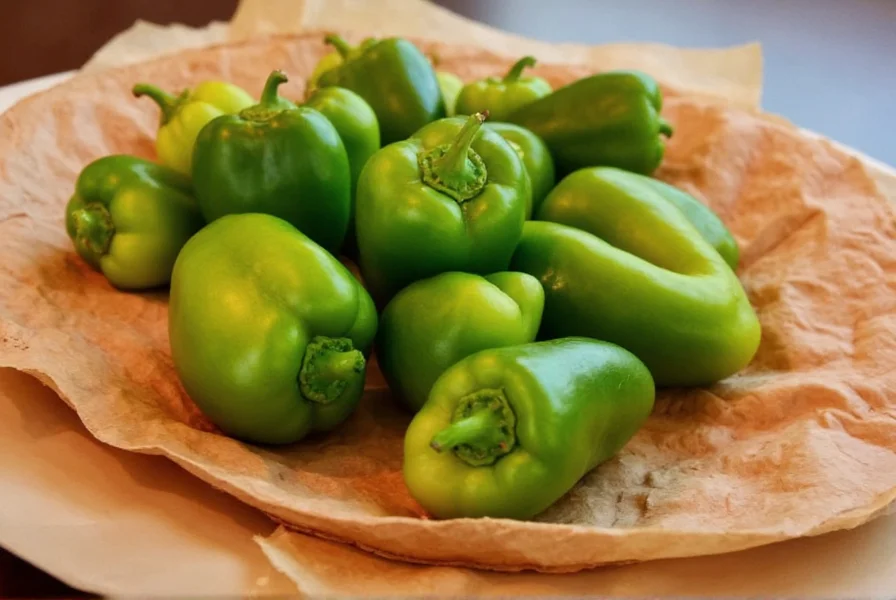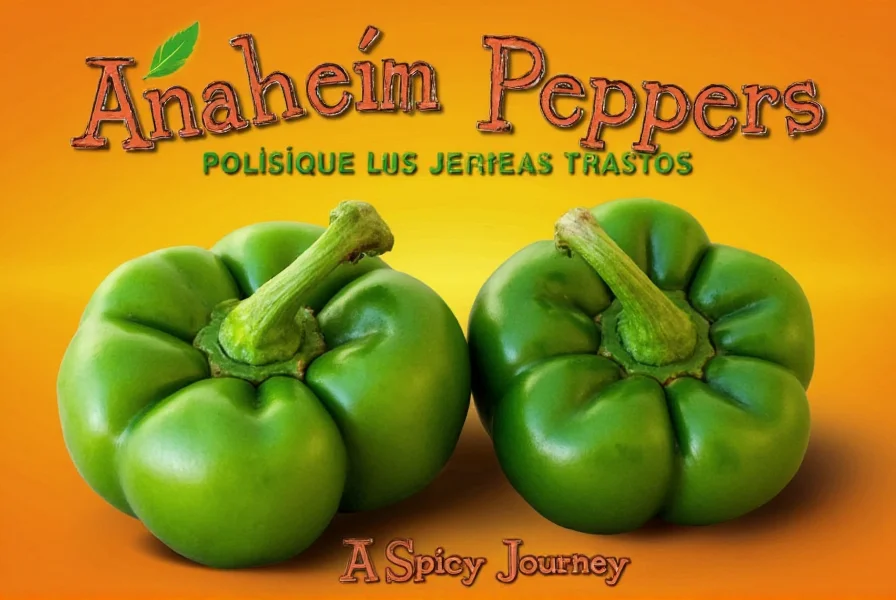Anaheim Peppers in Spanish: From Vocabulary to Vibrant Recipes – A Spicy Journey!
If you're passionate about cooking with spices and exploring global cuisines, then anaheim peppers should definitely be on your radar. But what do they mean in Spanish? And how can you make the most of them in your kitchen?
This article isn’t just a translation lesson—it’s your go-to guide for using, storing, and loving chiles Anaheim like a pro. Whether you’re prepping for taco night or experimenting with new flavors, we’ve got everything from storage hacks to fiery recipe ideas covered.
Table of Contents
- What Are Anaheim Peppers Called in Spanish?
- Why Knowing the Spanish Name Matters
- Buying Guide: How to Choose the Best Chiles Anaheim
- Spice Storage Hacks: Keep Your Chiles Fresh Longer
- Top 5 Ways to Use Anaheim Peppers in Spanish-Inspired Dishes
- Tasty Recipe Ideas Featuring Chiles Anaheim
- Common Mistakes to Avoid When Using Chiles Anaheim
- Frequently Asked Questions About Anaheim Peppers in Spanish
- Conclusion
What Are Anaheim Peppers Called in Spanish?
The name “Anaheim pepper” is commonly used in the United States, but if you're ever shopping at a Latin market or traveling through Mexico, you might not find them labeled that way. So what are they called in Spanish?
In many parts of Mexico and Central America, you’ll hear these mild, versatile chiles referred to as:
- Chile Anaheim (direct translation)
- Chile California (in some regions)
- Chile dulce – meaning “sweet chili,” due to their low heat level
- Chile pasillo – sometimes used in regional recipes
Why Knowing the Spanish Name Matters
If you're cooking Mexican-inspired dishes or planning a trip to a Spanish-speaking country, knowing the local terminology helps avoid confusion and adds authenticity to your culinary experience. Plus, markets often label items in Spanish, especially in Latin American neighborhoods.
Here's why it pays off to know the Spanish name:
- Better communication: You’ll sound more informed when ordering or buying ingredients.
- Easier grocery shopping: Spotting them by their local name prevents mix-ups with hotter peppers like poblanos or jalapeños.
- Recipe accuracy: Many traditional recipes call for “chile dulce” or “chile Anaheim.” Knowing what that means ensures you use the right ingredient.
Buying Guide: How to Choose the Best Chiles Anaheim
Whether you're shopping at a supermarket or visiting a mercado, selecting high-quality chiles is essential for great flavor. Here’s how to pick the best ones:
| Feature | Good | Bad |
|---|---|---|
| Color | Bright green to dark green; slight red tinge okay | Pale, yellowish, or overly red (overripe) |
| Texture | Firm and glossy skin | Soft spots, wrinkles, mushy feel |
| Size | 4–7 inches long (standard size) | Too small (possibly bitter) or too large (less tender) |
| Smell | Clean, earthy scent | Moldy, sour, or ammonia-like odor |
Top Brands & Varieties to Look For
- Sunset Farms Anaheim Peppers: Known for consistent flavor and crispness
- Nature's Promise Organic Anaheim: Great choice for organic enthusiasts
- Local Farmers Market Varieties: Fresher than store-bought and often more flavorful
Spice Storage Hacks: Keep Your Chiles Fresh Longer
Proper storage can make the difference between enjoying vibrant chiles or tossing wilted ones into the compost bin. Here are the best ways to keep your chiles Anaheim tasting great for days—even weeks!
Short-Term Storage (Up to One Week)
- Store unwashed peppers in a paper bag inside the crisper drawer of your fridge.
- Avoid plastic bags—they trap moisture and cause rotting.
- Do not wash until ready to use to prevent premature spoilage.
Medium-Term Storage (1–2 Weeks)
- Blanch and freeze for easy use later in stews or sauces.
- Dry them in a dehydrator or oven and grind into a powder for seasoning.
Long-Term Storage (Months)
- Make roasted Anaheim pepper puree and freeze in ice cube trays.
- Jar them in oil with garlic and herbs for a quick condiment or appetizer base.

Top 5 Ways to Use Anaheim Peppers in Spanish-Inspired Dishes
Anaheim peppers may not be the spiciest, but their mild heat and sweet undertones make them incredibly versatile. Here are five top ways to incorporate them into Spanish-inspired dishes:
- Rellenos Style Stuffed Peppers: Fill with cheese, rice, or meat and bake until golden.
- Salsas Verdes: Blend with tomatillos, cilantro, and lime for a zesty topping.
- Tacos y Tostadas: Roast and slice thin for adding to tacos, enchiladas, or quesadillas.
- Chiles en Nogada (Mock Version): Substitute for poblano in this festive dish—top with walnut sauce and pomegranate seeds.
- Stews & Soups: Add depth to pozole, sopa de fideo, or caldo-style soups.

Tasty Recipe Ideas Featuring Chiles Anaheim
Ready to get cooking? These flavorful recipes highlight the best of anaheim peppers while keeping things simple and delicious:
- Spanish-Style Chicken Braise: Sear chicken thighs with onions, garlic, and sliced Anaheim peppers. Deglaze with white wine and finish with paprika and olives.
- Chile Relleno Casserole: Layer roasted Anaheim peppers, Monterey Jack cheese, and a creamy egg-based sauce. Bake until bubbly.
- Easy Pepper & Potato Hash: Sauté diced potatoes, chopped Anaheim peppers, chorizo, and a dash of cumin for a hearty breakfast skillet.
- Creamy Anaheim Alfredo Pasta: Puree roasted Anaheim peppers with cream, Parmesan, and garlic for a unique twist on classic alfredo sauce.
- Pepper Pesto Crostini: Mix Anaheim puree with olive oil, basil, garlic, and lemon. Spread on toasted bread for an elegant appetizer.
Common Mistakes to Avoid When Using Chiles Anaheim
Even seasoned cooks can fall into common traps when handling these peppers. Don't let these mistakes ruin your next meal:
- Not roasting them: Skipping the roast misses out on deep, smoky flavor. Even a quick blister in a pan makes a big difference.
- Overloading dishes: Since they’re mild, it’s tempting to add a lot—but balance is key for texture and taste.
- Using old peppers: Old chiles lose flavor and become tough. Always check freshness before using.
- Not removing seeds properly: While Anaheim peppers aren’t super spicy, seeds can intensify heat slightly. Remove them if serving kids or spice-sensitive guests.
- Discarding the skins after roasting: Unlike some chiles, Anaheim skins are tender and edible. Leaving them on adds visual appeal and texture.
Frequently Asked Questions About Anaheim Peppers in Spanish
Are Anaheim Peppers the Same as Poblanos?
Nope! While both are mild, poblanos have a heartier flavor and thicker skin. They also tend to be slightly hotter and are typically used in mole or chiles rellenos.
Can I Substitute Anaheim Peppers for Jalapeños?
You can, but expect a milder result. If you want some kick, leave the seeds in or add a pinch of cayenne to balance.
How Do You Say “I Like Mild Peppers” in Spanish?
You can say: “Me gustan los chiles suaves.” Handy for ordering or explaining preferences at gatherings!
Are Anaheim Peppers Good for Pickling?
Yes! Their thick flesh holds up well to vinegar and spices, making them perfect for homemade pickled chiles.
Is There a Spanish Word for “Pepper Jam”?
Try mermelada de chile. It sounds fancy, but it's simply a sweet-and-spicy preserve made with Anaheim or other mild peppers.
Conclusion
Anaheim peppers, known in Spanish as chile Anaheim, chile dulce, or chile California, are a fantastic addition to any kitchen. Whether you're learning to cook Spanish-inspired dishes or looking for mild heat with bold flavor, these peppers deliver time and again.
From proper storage techniques to creative recipes and vocabulary tips, you now have all the tools to enjoy anaheim peppers like a pro. So grab a few next time you're at the market, experiment with different uses, and don’t forget to impress your friends with your Spanish chile knowledge!











 浙公网安备
33010002000092号
浙公网安备
33010002000092号 浙B2-20120091-4
浙B2-20120091-4